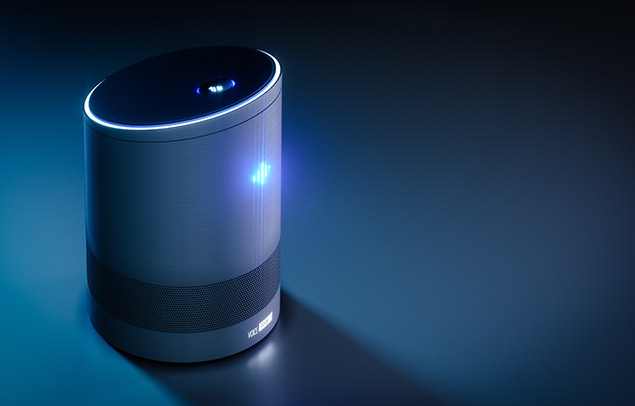Beware These 12 Vulnerabilities of Wi-Fi That Put You at Risk of Dangerous Frag Attacks
In spite of recent enhancements in Wi-Fi security, new vulnerabilities in the way most of us get information online are still being found. That was the case upon the recent discovery of "frag attacks," which are a result of design flaws in Wi-Fi itself.
That means these concerns have actually existed since the innovation's prevalent creation around 1997, and they could have been leveraged in the time because. Technology companies have started issuing patches for a few of their products that are especially vulnerable to frag attacks, and more suppliers will continue to do so.
IT Support Guys is already handling this freshly discovered vulnerability, guaranteeing our customers are safe from frag attacks. This post will describe what frag attacks are, how they can end up in your network, and how they are being dealt with.
What is a frag attack?
A https://rentry.co/x7vwu7 hacker in a dark room, performing a frag attack.
A frag (fragmentation and aggregation) attack either records traffic toward unsecured networks to then clone and impersonate servers, or opens the network by injecting plaintext frames that appear like handshake messages. More just, frag attacks deceive your network gadgets into thinking they are doing something safe.Three of the issues that emerged are style defects within Wi-Fi as a protocol. The rest are configuring mistakes.
Research into the vulnerabilities showed that accessing networks through these techniques is even possible when Wi-Fi networks are secured utilizing WPA2 or WPA3 file encryption.
When victims link to the corrupted network, the opponent then injects harmful packets of data that fool the victim's computer into utilizing a destructive DNS server. Due to the style flaw in Wi-Fi, the victim will not be alerted to the transformed packages of data that are fooling their computer system.
When the victim next sees an unsecured site, the attacker's DNS server will send them to a copy of the designated site, permitting the cybercriminal to record keystrokes consisting of delicate information like usernames and passwords.

Who identified the possibility of frag attacks?
This vulnerability was found by a scientist called Mathy Vanhoef, who likewise discovered the "KRACK" Wi-Fi vulnerability back in 2017. As of this post, Vanhoef is a postdoctoral researcher in computer system security at New York University Abu Dhabi.
Vanhoef's findings on frag attacks can be found completely at fragattacks.com, while his findings on KRACK attacks can be found at KRACKattacks.com. For his breakdown of frag attacks, see Vanhoef's video listed below.
What routers and access points are impacted by frag attacks?
An old computer system that is more susceptible to a frag attack.
Since it affects Wi-Fi itself, any gadgets that access Wi-Fi are susceptible. Yes, that's almost every device.Older hardware without the most updated security patches is the most vulnerable to frag attacks. The older a device is, the most likely that its producer has actually stopped releasing patches. More recent hardware that is still unpatched is likewise susceptible.
Users must make certain to examine that their devices, consisting of routers and network equipment, are up to date with spots and firmware. For companies with a managed companies who supplies network security services, this is most likely already being managed for you. Otherwise, ensure to remain thorough about modern-day security protocols, like using strong passwords and keeping away from websites that do not utilize HTTPS.
To make sure that your devices are upgraded and safeguarded against frag attacks, check your most current firmware logs to see if they have actually attended to the 12 typical vulnerabilities and direct exposures (CVE):.
Style flaws in Wi-Fi standard:.
CVE-2020-24588: Requirement that the A-MSDU flag in the plaintext QoS header field is authenticated.
CVE-2020-24587: Requirement that all pieces of a frame are encrypted under the exact same secret.CVE-2020-24586: Requirement that got pieces be cleared from memory after (re) linking to a network.

CVE-2020-26145: Acceptance of second (or subsequent) broadcast fragments even when sent out in plaintext and process them as complete unfragmented frames.
CVE-2020-26144: Acceptance of plaintext A-MSDU frames as long as the first 8 bytes represent a legitimate RFC1042 (i.e., LLC/SNAP) header for EAPOL.CVE-2020-26140: Acceptance of plaintext frames in a safeguarded Wi-Fi network.
CVE-2020-26143: Acceptance fragmented plaintext frames in a safeguarded Wi-Fi network.Other implementation flaws:.
CVE-2020-26139: Forwarding of EAPOL frames to other customers although the sender has not yet successfully authenticated to the AP.
CVE-2020-26146: Reassembling of fragments with non-consecutive package numbers.
CVE-2020-26147: Reassembling of pieces although some of them were sent in plaintext.CVE-2020-26142: Treatment of fragmented frames as full frames.
CVE-2020-26141: Verification of the Message Integrity Check (authenticity) of fragmented TKIP frames.Are frag attacks being actively made use of?
A hacker executing a frag attack on an unknowing victim.It is tough to inform whether attackers have actually explicitly targeted these vulnerabilities, and there is no evidence that they have been. Contrarily, cybercriminals work tirelessly to discover vulnerabilities, and issues that have actually been unpatched for over 20 years may have been leveraged in the past.
The bright side is that Vanhoef signaled the Wi-Fi Alliance and Industry Consortium for Advancement of Security on the Internet (ICASI) before making his findings public, so tech business might start to patch the vulnerabilities early. The Alliance provided an upgrade on May 11, 2021, stating that the hole is quickly covered through regular gadget updates that enable the detection of these transmissions.
In general, the fact that nobody made note of this vulnerability for so long makes it not likely that somebody other than Vanhoef found it. If black-hat hackers had exploited it previously, white-hat hackers would have figured out it was occurring.
The potential exploitation of these openings is major, however the situations should be perfect for a cybercriminal to capitalize. To access your network by means of these vulnerabilities, opponents must be in radio variety and have direct interaction with a user on the network. It also requires misconfigured network settings.
How are IT support companies managing frag attacks?
An IT Support Guys leader resolving colleagues on the vulnerability that triggers frag attacks.
Given how many devices are affected by this vulnerability, the whole technology market is reliant on makers' updates to spot them. Vendors have been working on patches for over 9 months given that Vanhoef revealed the vulnerability.
As this is a continuous development, ITSG is working directly with suppliers to guarantee that all spots are used when launched. Microsoft calmly presented the patch that covers these vulnerabilities on March 9, 2021. Due to the fact that all devices on our managed gadgets plan are patched as quickly as possible, all managed Windows gadgets covered by ITSG already have the patches they require.
If you are uncertain if your existing ITSG strategy covers spot management, book a 15-minute talk to our virtual CIO now.